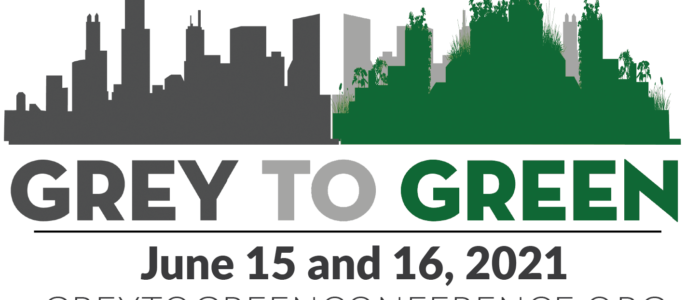Attend Panel Discussion: Demystifying Blue Green Roofs
Join Dr. Karen Liu on Demystifying Blue Green Roofs: Benefits and Challenges to Innovate Water Management
Rooftops are a hidden urban resource. They provide valuable real estate for deploying Low Impact Development (LID) technologies such as green roofs, blue roofs and blue green roofs for stormwater management.

Green Roof Specialist Dr. Karen Liu will be a panelist at Grey to Green Conference 2021.
Green Roofs
Green roofs are specialized systems that support vegetation growth on rooftops. They not only beautify our skyline but create habitat for insects, birds and wildlife, and bring back nature to our cities. Green roofs save energy on heating and cooling and mitigate the urban heat island effects. The plants and growing medium absorb and retain rainwater, relieving burdens on municipal stormwater infrastructure.
Blue Roofs
Blue roof acts as a temporary reservoir, captures and stores rainwater before releasing it slowly to the municipal stormwater infrastructure through control flow drains. The rainwater is usually detained on the roof for up to 24 hours. This detention reduces the peak flow of roof runoff, helps relieve the municipal stormwater system and prevents flash floods in our cities during heavy storm events.
Active blue roofs use real-time weather forecast to control the release of rainwater, allowing the ponded water to evaporate back to the atmosphere. When a storm is forecasted, a signal is sent to the controller to release the stored water on the roof to make room for the next storm. In combination with a reflective roof membrane, active blue roofs can also provide evaporative cooling and reduce urban heat island.
Blue Green Roofs
Blue green roofs combine the best of both worlds. A common design is to elevate the green roof on interlocking structural modules. Rainwater is retained by the green roof to be taken up by the plants or evaporated. Any excess is drained to the blue roof underneath and is slowly released through control flow drains. This design is limited to 2% slope due to the reduced water storage at steeper slopes.

The StormCapTM+Detention friction detention blue green roof is effective on both flat and sloped roofs.
Friction detention blue green roofs can get around the slope limitation. In this design, the free drainage in the green roof is replaced by a friction drainage that consists of thousands of vertical fibres sandwiched between 2 filter fabrics. Rainwater travelling through the drainage mat is slowed down due to friction. Since detention happens at the drainage level, this design is effective on both flat and sloped roofs.
Interested to learn more about how these sustainable roofs can help you meet the stormwater management goals of your next project? NLSM’s Green Roof Specialist Dr. Karen Liu, along with leading industry experts, will discuss the latest advances and challenges in a live panel discussion entitled “Demystifying the Blue Green Roofs: Benefits and Challenges to Innovate Water Management” at the upcoming Grey To Green 2021 virtual conference on June 16. See you online!
More than 2M SQFT supplied coast to coast
Email or call (416) 637-5772 Ext 1 for stormwater calculations specific to your project.
Unbiased, scientific research for the green infrastructure industry.





Comments are closed.